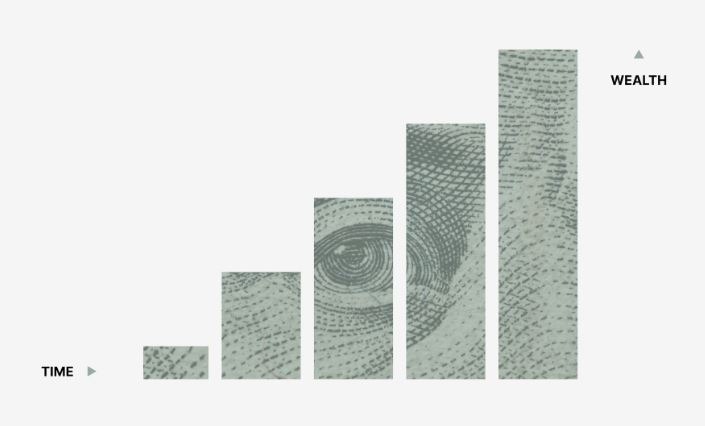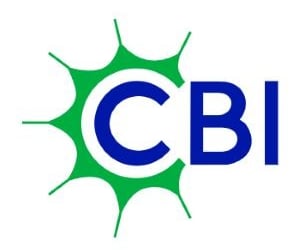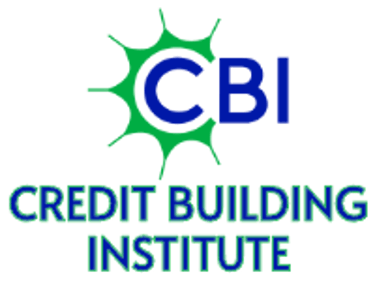The Smart Guide to Using Credit for Wealth-Building and Financial Independence
CREDIT HABITSWEALTH-BUILDINGPERSONAL CREDIT
CBI Contributor
10/15/20254 min read


Income-Producing Assets vs. Disposable Goods
The key to using credit responsibly is understanding the difference between income-generating assets and disposable goods.
Good Use of Credit (Income-Producing Assets)
Income-generating assets increase in value or produce cash flow. Examples include:
Real Estate Investments – Real estate investing involves various strategies, such as acquiring rental properties for steady income, house hacking—renting out part of a home to offset mortgage costs, and investing in land for long-term appreciation due to market demand and urban development. Each offers unique benefits for wealth-building in real estate.
Education That Leads to Higher Earnings - Pursuing degrees or certifications specifically designed to enhance your income potential can significantly impact your financial future. These educational paths equip you with the skills and knowledge required in high-demand fields, ultimately leading to improved job prospects and increased earning potential.
Starting a Business – Funding for a business that generates consistent revenue and focuses on creating sustainable growth and long-term wealth accumulation.
Cash-Flow Assets – Investments like stocks, which represent company ownership and may appreciate while offering dividends; bonds, which are loans to governments or corporations paying interest; and vending machines, which generate passive income through sales, are excellent for creating reliable passive income. Other investment vehicles also exist that provide earnings with minimal management effort.
Bad Use of Credit (Disposable Goods)
Disposable goods lose value and do not generate income. These include:
Clothing and fashion trends
Dining out and entertainment
Luxury electronics and gadgets
Vacations and travel
Expensive cars (especially when new)
A simple rule: Don't buy it with credit if it doesn’t make you money.
The Power of Leveraged Credit for Wealth-Building
Wealthy individuals and businesses use credit strategically. They don’t see credit as "free money" but as a leveraging tool to increase their net worth.
How the Wealthy Use Credit Wisely:
Real estate investors use mortgages to purchase properties that generate rental income and appreciate in value.
Entrepreneurs use business loans to start and grow revenue-generating companies.
Stock Market Investors use margin accounts to invest in assets that provide dividends and long-term gains.
How Young People Can Apply This Strategy:
Use a student loan only if your degree significantly boosts your earnings.
Finance a rental property rather than a high-end apartment for yourself.
Use credit to purchase equipment for a business rather than luxury goods.
The Debt Trap: Why Most People Get It Wrong
Most people fall into the consumer debt trap due to psychological triggers and marketing tactics designed to encourage impulse spending.
Common Pitfalls:
Instant Gratification: Credit cards and "buy now, pay later" services make it easy to buy things immediately without considering long-term consequences.
Marketing Pressure: Social media and influencer culture promote a lifestyle of luxury and excess, making it tempting to keep up.
Minimal Payments Trap: Credit card companies make billions by allowing customers to pay only the minimum, keeping them in debt for years.
Break the Cycle:
Before purchasing with credit, ask yourself: Will this purchase increase my net worth or generate income?
Delay any non-essential purchase for at least 30 days before deciding.
Training Yourself to Use Credit Only for Income-Producing Assets
Developing financial discipline is key to using credit effectively. Follow these steps to build a solid financial foundation:
1. Create a Personal Credit Philosophy
Write a commitment statement: “I will only use credit to acquire income-generating assets that increase my wealth over time.” Keep this statement visible as a daily reminder.
2. Use a Credit Approval Checklist
Before making a purchase, answer these questions:
Will this purchase generate income or appreciate?
Can I pay this off in full within the billing cycle?
Am I taking on this debt for long-term gain, not short-term pleasure?
3. Practice Delayed Gratification
Use the 72-Hour Rule – Wait three days before making a non-essential purchase.
Set savings goals and reward yourself with cash purchases instead of using credit.
4. Pay for Disposable Goods with Cash or Debit
If you can’t buy it outright, you can’t afford it.
Debit and cash make spending more "real," reducing impulse buys.
The Smart Guide to Using Credit for Wealth-Building and Financial Independence
Credit is a double-edged sword. When used wisely, it can unlock opportunities for financial growth and wealth-building. However, when misused, it can lead to financial ruin.
Today, young adults are bombarded with credit card offers, "buy now, pay later" schemes, and loans, encouraging them to spend recklessly. According to a 2023 report by the Federal Reserve, the average credit card debt among Americans aged 18 to 30 is over $4,000. Many of these purchases include fast fashion, expensive gadgets, and vacations—items that depreciate and do not contribute to long-term financial stability.
This guide aims to shift your perspective on credit, helping you adopt a wealth-building mindset by using credit exclusively to acquire income-producing assets and avoid liabilities that drain your wealth.
Case Studies & Success Stories
Case Study 1: The Young Real Estate Investor
John, a 25-year-old, saved $10,000 and used an FHA loan (a type of leveraged credit) to buy a duplex. He lived in one unit and rented out the other, covering his mortgage payments. Instead of using credit for vacations and clothes, he built equity and cash flow.
Case Study 2: The Entrepreneurial Student
Sara, a college student, used a small business loan to start an online store selling digital courses. Within a year, her side hustle replaced her part-time job, providing sustainable income and financial independence.
Action Plan: Implementing Smart Credit Habits
1. Evaluate and Manage Your Credit Responsibly
Check your credit score regularly (use free services like Credit Karma).
Pay your bills on time and in full to avoid interest.
Keep credit utilization below 30% for a strong credit score.
2. Build an Excellent Credit Score Without Unnecessary Debt
Open a credit card but only use it for essential expenses you can pay off immediately.
Enroll in a certified credit-building program.
Automate payments to never miss due dates.
3. Identify and Finance an Income-Producing Opportunity
Start researching real estate, side businesses, or investing opportunities.
Build an emergency fund before leveraging credit for business or investment.
Overcoming Social Pressure & Changing Your Financial Environment
1. Recognize Social Traps
Unfollow influencers promoting luxury lifestyles without financial transparency.
Resist peer pressure to "keep up" with friends' spending habits.
2. Surround Yourself with Financially Smart People
Join financial literacy groups or online communities.
Find a mentor who has successfully used credit for wealth-building.
3. Set Clear Financial Goals
Define what financial freedom means to you.
Create a 5-year plan with income, savings, and investment milestones.
Final Motivational Message
Changing your approach to credit can transform your life. While most people fall into the consumer debt trap, you have the power to break free by making intentional, wealth-building financial decisions.
By committing to only using credit for income-producing assets, you’ll position yourself for financial freedom, early retirement, and generational wealth. The key to success is discipline, patience, and a strategic mindset.
Start today—your future self will thank you!
GLOSSARY QUICKLINKS
Term 1
Term 2
Term 3
Term 4
Term 5
Credit Building Institute
Together, we can build
creditable relationships and results


Copyright © 2023 Credit Building Institute - All Rights Reserved.
Trusted credit building with 24/7 encrypted data. Build your credit with affordable credit builder plans and reporting to all 3 credit bureaus, helping improve your credit score quickly and safely. 100% money-back guarantee (T&Cs)
